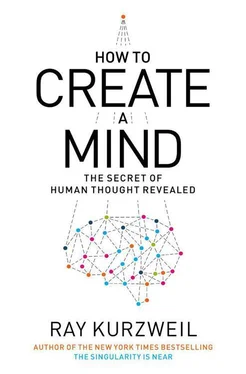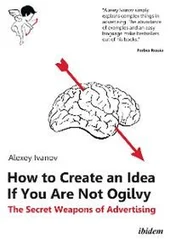It leaves us with an appreciation of a capability that nonbiological systems have that biological systems do not: the ability to be copied, backed up, and re-created. We do that routinely with our devices. When we get a new smartphone, we copy over all of our files, so it has much the same personality, skills, and memories that the old smartphone did. Perhaps it also has some new capabilities, but the contents of the old phone are still with us. Similarly, a program such as Watson is certainly backed up. If the Watson hardware were destroyed tomorrow, Watson would easily be re-created from its backup files stored in the cloud.
This represents a capability in the nonbiological world that does not exist in the biological world. It is an advantage, not a limitation, which is one reason why we are so eager today to continue uploading our memories to the cloud. We will certainly continue in this direction, as nonbiological systems attain more and more of the capabilities of our biological brains.
My resolution of the dilemma is this: It is not true that You 2 is not you—it is you. It is just that there are now two of you. That’s not so bad—if you think you are a good thing, then two of you is even better.
What I believe will actually happen is that we will continue on the path of the gradual replacement and augmentation scenario until ultimately most of our thinking will be in the cloud. My leap of faith on identity is that identity is preserved through continuity of the pattern of information that makes us us. Continuity does allow for continual change, so whereas I am somewhat different than I was yesterday, I nonetheless have the same identity. However, the continuity of the pattern that constitutes my identity is not substrate-dependent. Biological substrates are wonderful—they have gotten us very far—but we are creating a more capable and durable substrate for very good reasons.
CHAPTER 10
THE LAW OF ACCELERATING RETURNS APPLIED TO THE BRAIN
And though man should remain, in some respects, the higher creature, is not this in accordance with the practice of nature, which allows superiority in some things to animals which have, on the whole, been long surpassed? Has she not allowed the ant and the bee to retain superiority over man in the organization of their communities and social arrangements, the bird in traversing the air, the fish in swimming, the horse in strength and fleetness, and the dog in self-sacrifice?
Samuel Butler, 1871
There was a time, when the earth was to all appearance utterly destitute both of animal and vegetable life, and when according to the opinion of our best philosophers it was simply a hot round ball with a crust gradually cooling. Now if a human being had existed while the earth was in this state and had been allowed to see it as though it were some other world with which he had no concern, and if at the same time he were entirely ignorant of all physical science, would he not have pronounced it impossible that creatures possessed of anything like consciousness should be evolved from the seeming cinder which he was beholding? Would he not have denied that it contained any potentiality of consciousness? Yet in the course of time consciousness came. Is it not possible then that there may be even yet new channels dug out for consciousness, though we can detect no signs of them at present?
Samuel Butler, 1871
When we reflect upon the manifold phases of life and consciousness which have been evolved already, it would be rash to say that no others can be developed, and that animal life is the end of all things. There was a time when fire was the end of all things: another when rocks and water were so.
Samuel Butler, 1871
There is no security against the ultimate development of mechanical consciousness, in the fact of machines possessing little consciousness now. A mollusk has not much consciousness. Reflect upon the extraordinary advance which machines have made during the last few hundred years, and note how slowly the animal and vegetable kingdoms are advancing. The more highly organized machines are creatures not so much of yesterday, as of the last five minutes, so to speak, in comparison with past time. Assume for the sake of argument that conscious beings have existed for some twenty million years: see what strides machines have made in the last thousand! May not the world last twenty million years longer? If so, what will they not in the end become?
Samuel Butler, 1871
My core thesis, which I call the law of accelerating returns (LOAR), is that fundamental measures of information technology follow predictable and exponential trajectories, belying the conventional wisdom that “you can’t predict the future.” There are still many things—which project, company, or technical standard will prevail in the marketplace, when peace will come to the Middle East—that remain unknowable, but the underlying price/performance and capacity of information has nonetheless proven to be remarkably predictable. Surprisingly, these trends are unperturbed by conditions such as war or peace and prosperity or recession.
A primary reason that evolution created brains was to predict the future. As one of our ancestors walked through the savannas thousands of years ago, she might have noticed that an animal was progressing toward a route that she was taking. She would predict that if she stayed on course, their paths would intersect. Based on this, she decided to head in another direction, and her foresight proved valuable to survival.
But such built-in predictors of the future are linear, not exponential, a quality that stems from the linear organization of the neocortex. Recall that the neocortex is constantly making predictions—what letter and word we will see next, whom we expect to see as we round the corner, and so on. The neocortex is organized with linear sequences of steps in each pattern, which means that exponential thinking does not come naturally to us. The cerebellum also uses linear predictions. When it helps us to catch a fly ball it is making a linear prediction about where the ball will be in our visual field of view and where our gloved hand should be in our visual field of view to catch it.
As I have pointed out, there is a dramatic difference between linear and exponential progressions (forty steps linearly is forty, but exponentially is a trillion), which accounts for why my predictions stemming from the law of accelerating returns seem surprising to many observers at first. We have to train ourselves to think exponentially. When it comes to information technologies, it is the right way to think.
The quintessential example of the law of accelerating returns is the perfectly smooth, doubly exponential growth of the price/performance of computation, which has held steady for 110 years through two world wars, the Great Depression, the Cold War, the collapse of the Soviet Union, the reemergence of China, the recent financial crisis, and all of the other notable events of the late nineteenth, twentieth, and early twenty-first centuries. Some people refer to this phenomenon as “Moore’s law,” but that is a misconception. Moore’s law—which states that you can place twice as many components on an integrated circuit every two years, and they run faster because they are smaller—is just one paradigm among many. It was in fact the fifth, not the first, paradigm to bring exponential growth to the price/performance of computing.
The exponential rise of computation started with the 1890 U.S. census (the first to be automated) using the first paradigm of electromechanical calculation, decades before Gordon Moore was even born. In The Singularity Is Near I provide this graph through 2002, and here I update it through 2009 (see the graph on page 257 titled “Exponential Growth of Computing for 110 Years”). The smoothly predictable trajectory has continued, even through the recent economic downturn.
Читать дальше












